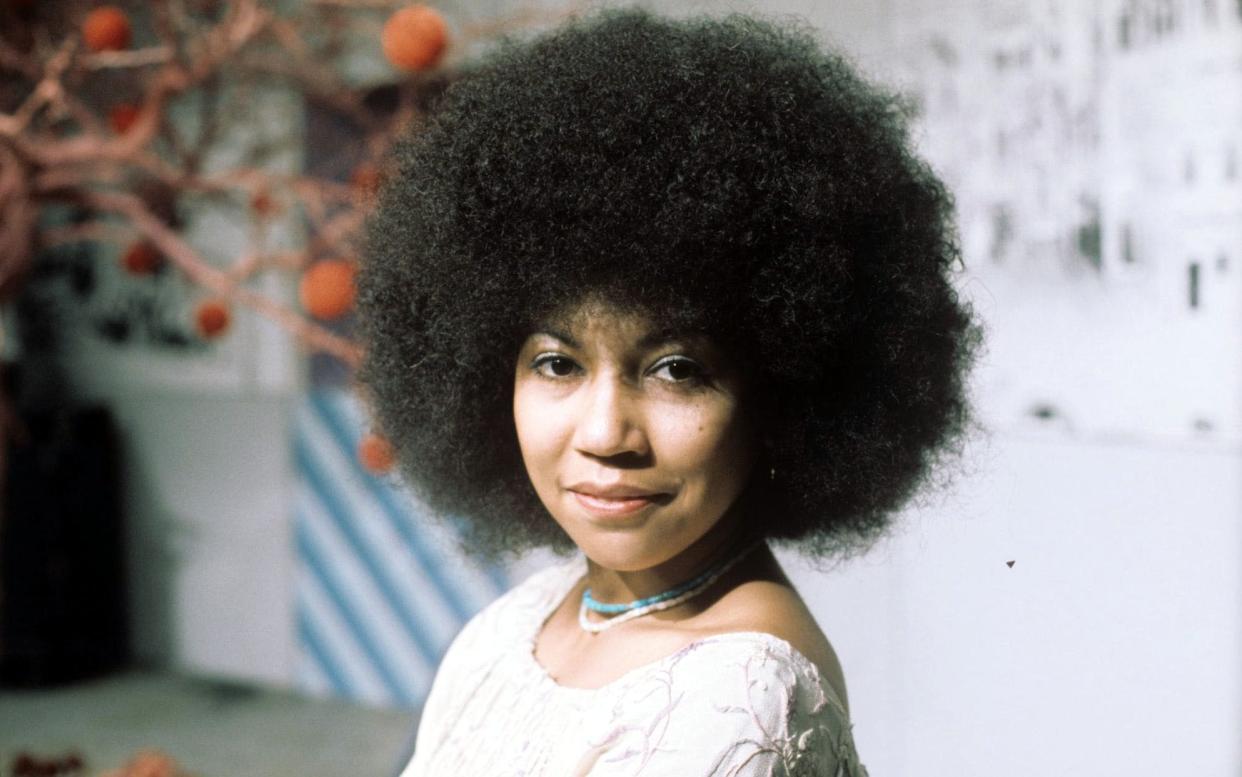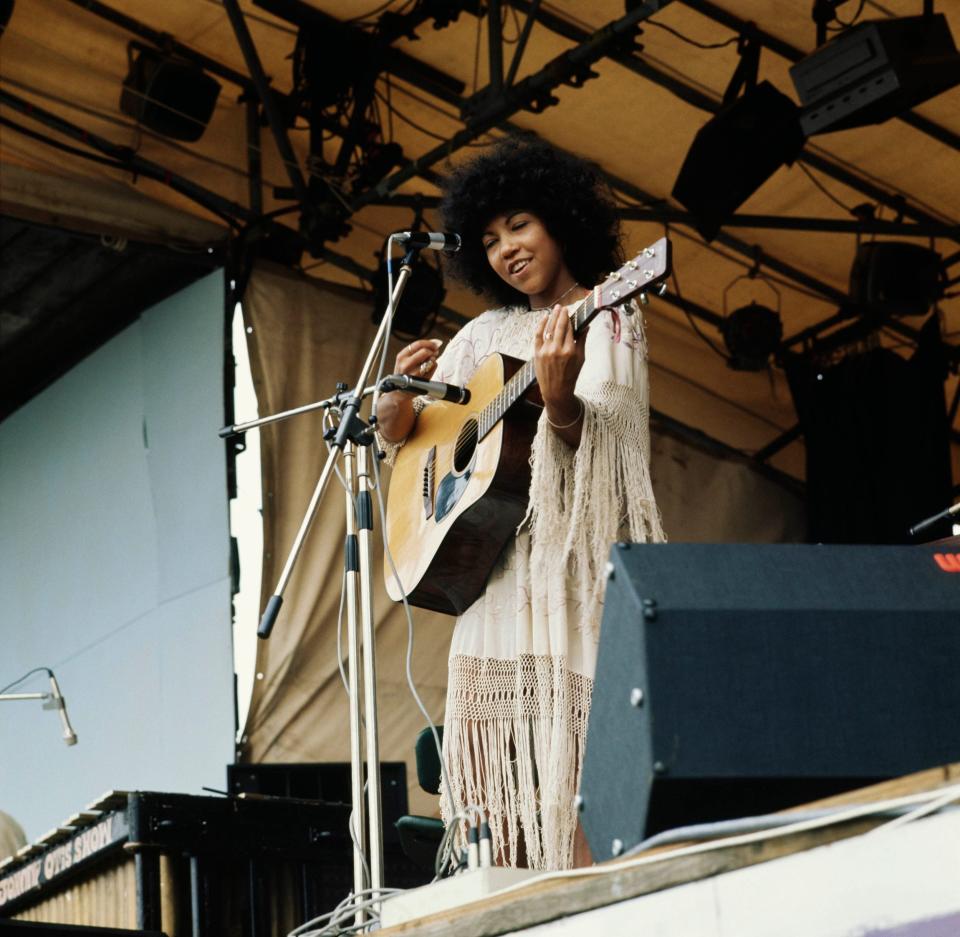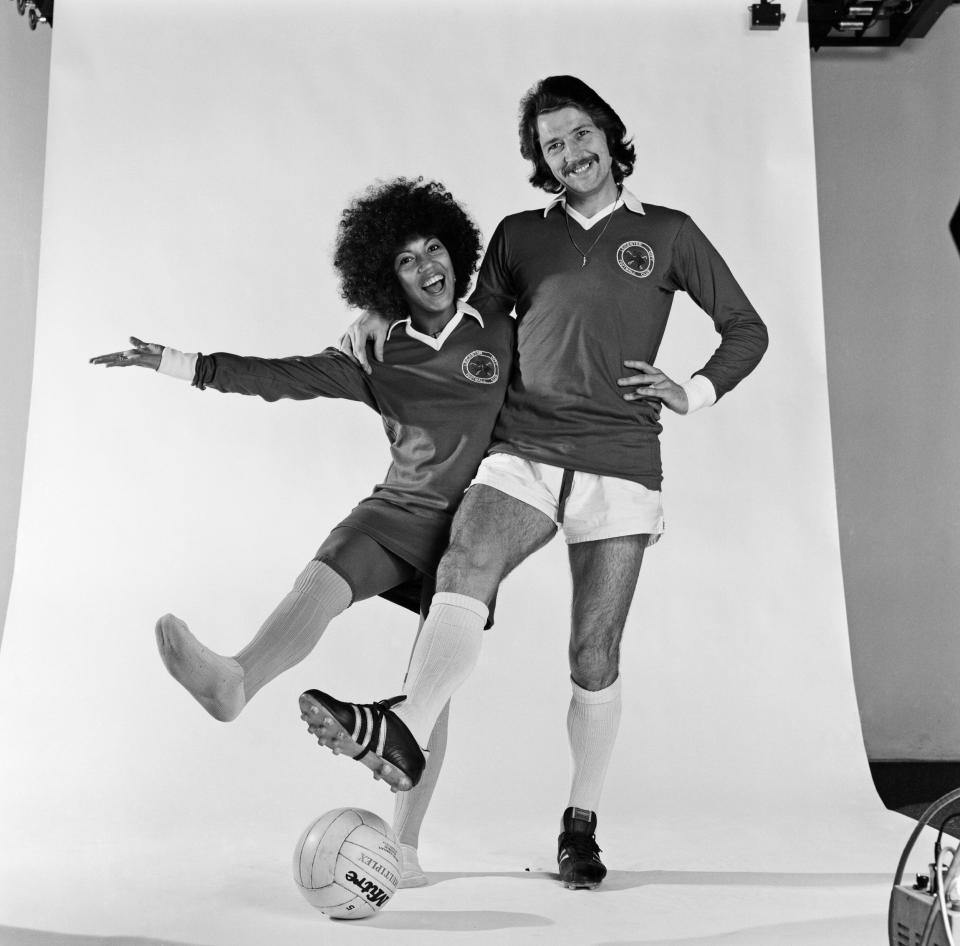Linda Lewis, singer and songwriter best known for her hits Rock-a-Doodle-Doo and It’s in His Kiss – obituary

Linda Lewis, the singer who has died aged 72, had a string of hits in the 1970s in her own right, as well as backing the likes of David Bowie and Rod Stewart; she is perhaps best known for the singles Rock-a-Doodle-Doo, and It’s in His Kiss, which was later covered by Cher.
Likened to Mariah Carey and Minnie Riperton, with a dynamic five-octave voice, she was one of a tiny handful of black female singers in Britain at the time. “Because I am black, people presumed I was an American who was brought up in gospel churches,” she recalled, “where in fact I was raised in the Catholic Church, which is very inhibiting.”
She was born Linda Ann Fredericks in West Ham on September 27 1950, the eldest of six children born to parents who were both mixed-race. Her musical talents were evident from early on, and she taught herself to play guitar and piano; her sisters Shirley and Dee would also go on to become singers.
Linda’s mother, who had been an aspiring singer herself, was ambitious for her, and sent her for a few years to stage school – “It wasn’t one of the big posh ones,” she told Record Collector magazine. “It was in the East End of London and it was called – wait for it – Peggy O’Farrell’s School Of 100 Wonderful Children.” But she was bullied on account of her colour, and she left at seven. Also, she said, “my mum couldn’t afford the lunches.”
Peggy O’Farrell still looked out for her, however, putting casting calls her way, and she was an extra in Tony Richardson’s film of A Taste of Honey, as well as one of the screaming teenagers at the Beatles gig that rounds off A Hard Day’s Night. “I’m the one with the little baby Afro trying to listen to the music while everyone around me is screaming. There’s a brief close-up of me looking deadly serious, compared to the rest of the crowd going wild.”
But making her own music was her calling, and she joined a ska and bluebeat band, the Q Set. When she was 14, and still at convent school, her mother dressed her in a miniskirt– and donned one herself – and took her to a club in Southend, where she was invited up on stage to sing Dancing in the Street, a hit at the time for Martha Reeves & the Vandellas, with the blues legend John Lee Hooker. “I don’t know if he was impressed with me, but he was very impressed with my mum,” she recalled.

Hooker suggested that Linda take up with his manager, Don Arden, who smartened her up, made her change her name (she chose Lewis in honour of the US singer Barbara Lewis) and engineered a deal with Polydor, for whom she recorded the single You Turn My Bitter Into Sweet, which did not chart but went on to become a Northern Soul classic.
She started a relationship with the record’s producer, Ian Samwell, 14 years her senior – though her mother tried (and failed) to put a stop to the relationship, putting him up against a wall and threatening him. Samwell prised her away from Arden and began managing her career.
The relationship led to her moving out of the family home; she lived briefly with Samwell, but ended up in a Hampstead commune where Marc Bolan, David Bowie, Elton John and Cat Stevens liked to hang out.
She played with bands including White Rabbit (with Junior Murvin, who would later record the reggae classic Police and Thieves) and Ferris Wheel (in which she replaced the departing Marsha Hunt), and gigged relentlessly. As a solo act she was on the bill for the first Glastonbury Festival, in 1970, though she later admitted that taking magic mushrooms with Bowie before she went on stage was perhaps unwise.
Switching to the Reprise label, she released the albums Say No More in 1971, followed by Lark, which contained her first Top 20 single, Rock-a-Doodle-Doo (1973), co-written with her future husband, Jim Cregan, which featured her sisters Shirley and Dee on backing vocals. “When we were going on TV to sing it I bought them red dresses to wear so they looked fatter than me,” she later wryly confessed.
The idea for the song had come to her in a dream: “I was on this fruit machine and I pulled the arm and it came out ‘Rock-a-Doodle-Doo’, and all this money came gushing out … The next day I wrote a little story about two youngsters in love.”
While her solo career was burgeoning – with the likes of Stevie Wonder, Joni Mitchell and Eric Clapton declaring themselves to be fans – she also became prized as a backing singer. She appeared on Cat Stevens’s album Tea for the Tillerman, and had an on-off relationship with him, but they parted company when he converted to Islam: “To put it kindly, he was searching for greater meaning in life. To put it bluntly, he was becoming a pain.”

She also sang on David Bowie’s album Aladdin Sane, adding dramatic power to Watch That Man and Panic in Detroit. She would also provide back-up for the likes of Al Kooper, Chris Spedding, Steve Harley, Rick Wakeman, and, later, Jamiroquai.
She moved labels again, this time to Arista, whose boss Clive Davis saw her as a potential disco diva. It was not an aspiration she shared, but in 1975 her version of Betty Everett’s US No 1 It’s In His Kiss reached the UK Top 10. The album it appeared on, Not a Little Girl Anymore, continued Arista’s attempts to add raunch to her image, and its original cover (later toned down) led to some shops refusing to stock it.
Disillusioned with her treatment by Arista, at the end of the decade she scaled back her career and moved to the US with Jim Cregan, who was by then her husband (and playing guitar for Rod Stewart).
But she was unhappy with her new life in Colorado, “out in the middle of nowhere with loads of rednecks”. She remembered watching EastEnders on American cable TV: “They actually had subtitles to help the locals understand it – and I’d end up crying because I was so homesick.”
Divorced from Cregan – “we were both unfaithful” – she returned to Britain, recording the album Hacienda View with Wombles supremo Mike Batt – not a happy experience, she recalled. She went back to the US on her own, to Los Angeles, where she devoted herself largely to bringing up her adopted son.
She moved back to England, working with Joan Armatrading on her 1992 album Square the Circle, and in 1999 released Kiss of Life. It would be her final solo album, but she carried on working (in 2000, for example, she featured on three tracks of Oasis’s Standing on the Shoulder of Giants).
She returned to Glastonbury in 2003 and 2009, while in 2007 BBC Four broadcast her gig with the Soul Britannia All Stars at the Barbican. The same year, she collaborated with Basement Jaxx on the track Close Your Eyes.
In 2023 she collaborated with the folk-funk band the Paracosmos, appearing on their single Earthling. When Gilles Peterson played it on his BBC 6 Music show, he declared: “Linda Lewis is back.”
“When I look back, I realise I’ve lived an extraordinarily rich life,” she said. “Would I do it all again, given a chance? No. Would I do some of it again? Certainly.”
Linda Lewis married the agent Neil Warnock in 2004, but they subsequently divorced; she is survived by her son Jesse.
Linda Lewis, born September 27 1950, died May 3 2023

 Yahoo News
Yahoo News 
